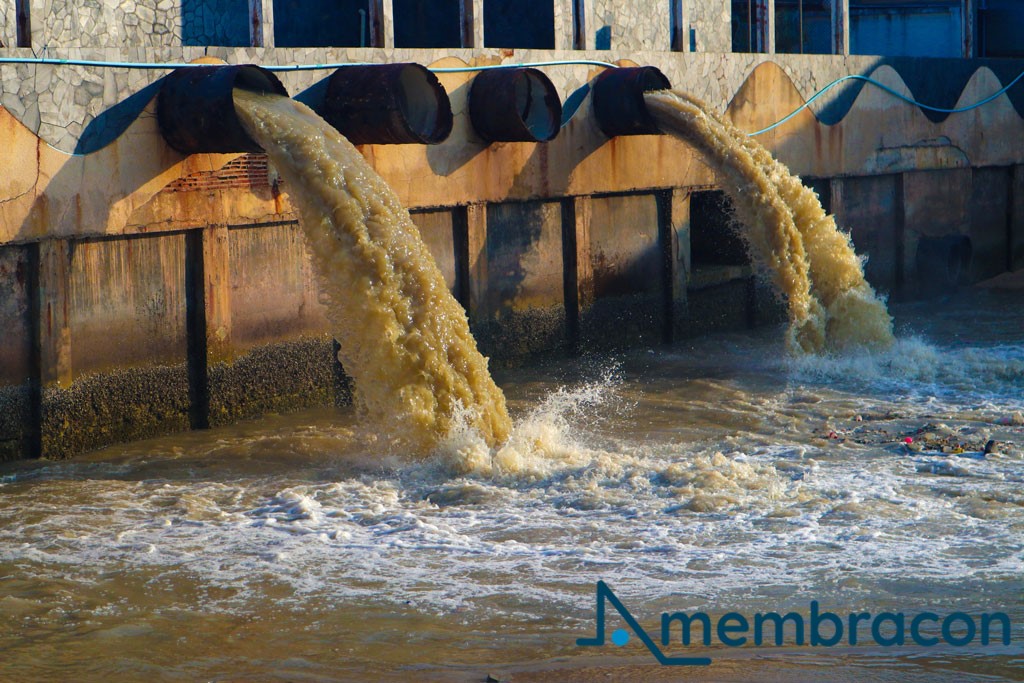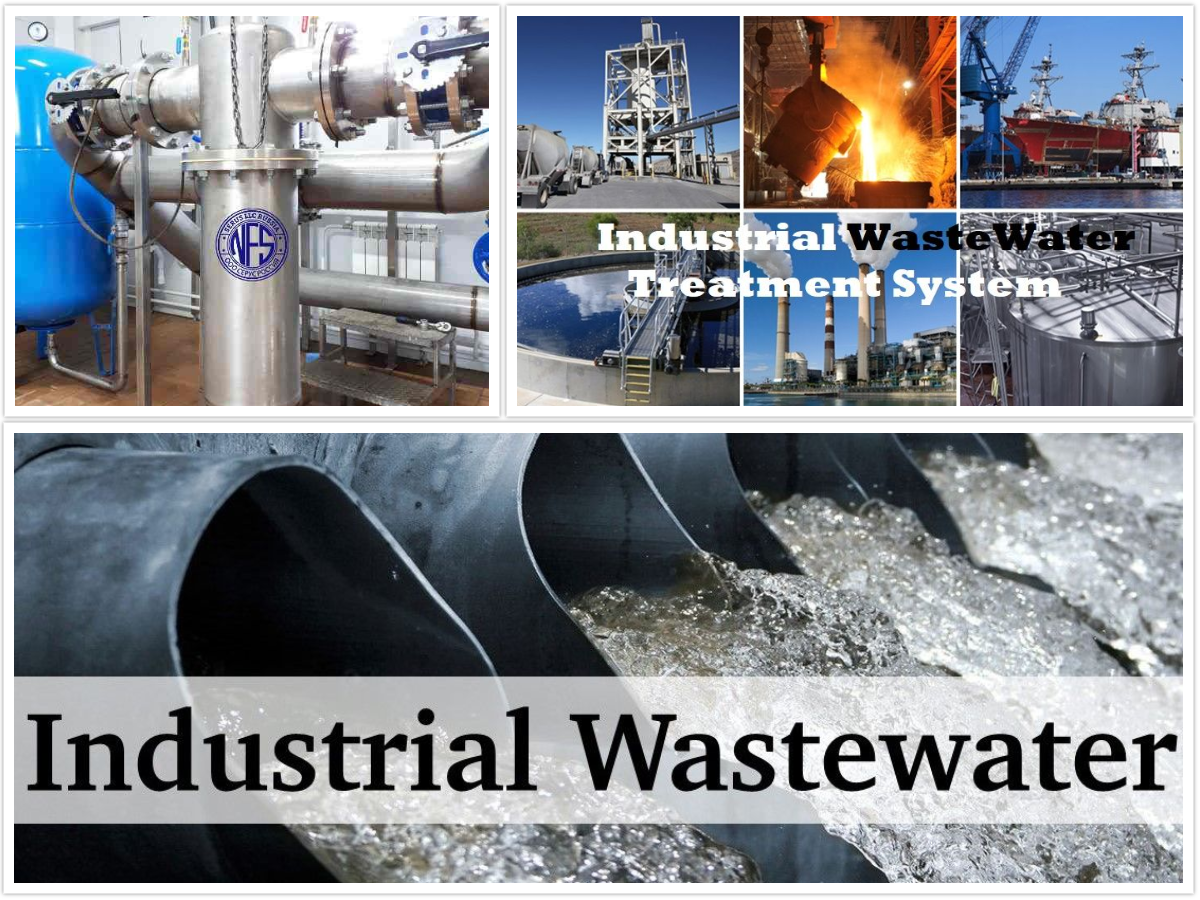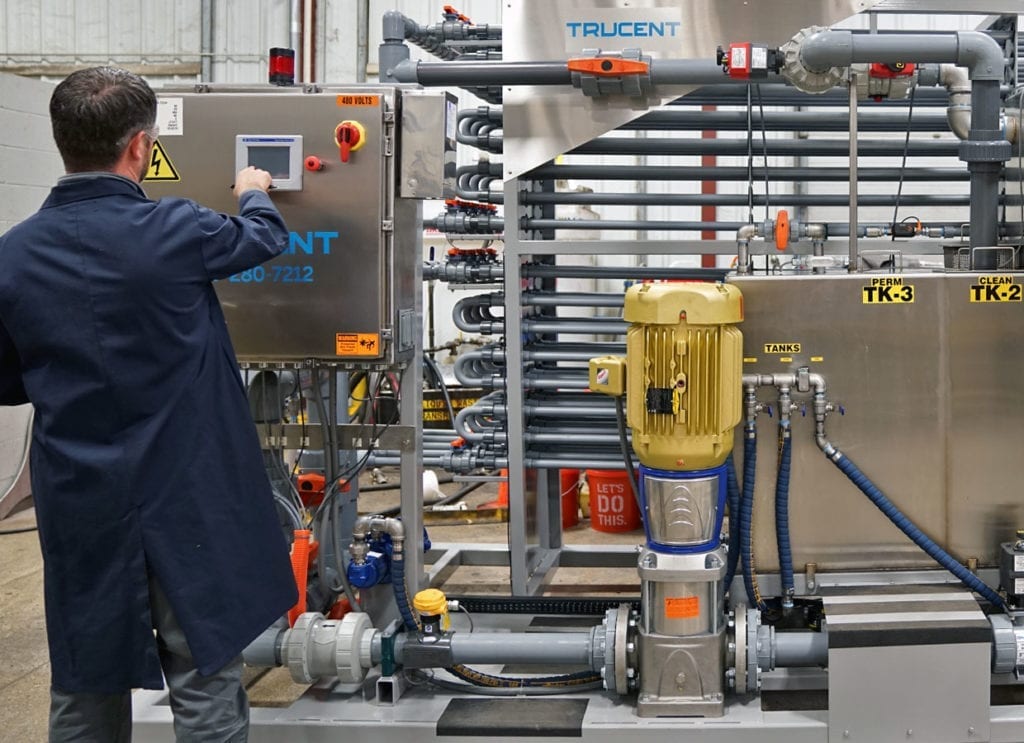Industrial Waste Water Treatment-- Protect the Setting with Expert Water Treatment Providers
Innovations and Breakthroughs in Industrial Waste Water Treatment Technologies
The landscape of commercial wastewater treatment is undertaking a transformative change, driven by innovations that boost both efficiency and sustainability. Arising technologies, such as membrane layer bioreactors and microbial fuel cells, are redefining impurity removal procedures while adding to power generation. Source recuperation techniques are obtaining traction, lining up with round economic climate concepts. As regulatory requirements advance, the integration of AI and artificial intelligence into wastewater monitoring systems promises to improve procedures and guarantee compliance. Nonetheless, the complete implications of these improvements elevate critical concerns concerning their scalability and long-term effect on sector techniques.
Introduction of Drainage Treatment Technologies
Wastewater treatment technologies encompass a series of methods made to get rid of impurities from commercial effluents before their launch right into the atmosphere. These technologies are crucial for maintaining eco-friendly equilibrium and making certain compliance with environmental regulations. The key classifications of wastewater treatment include physical, chemical, and organic techniques, each serving distinctive functions based on the nature of the impurities existing.

Biological treatment approaches use microorganisms to break down raw material, making them particularly efficient for organic-rich effluents. Strategies like turned on sludge and biofilm reactors harness the natural deterioration abilities of microorganisms, leading to significant reductions in biochemical oxygen demand (BODY)
Advanced Purification Strategies
Advanced purification techniques represent a vital advancement in the world of commercial wastewater therapy, boosting the performance of contaminant removal procedures. Industrial Waste Water Treatment. These methods encompass a variety of technologies, including microfiltration, ultrafiltration, nanofiltration, and reverse osmosis, which provide sequential barriers for numerous particle dimensions and chemical frameworks
Microfiltration and ultrafiltration make use of membrane layer systems to get rid of put on hold solids, germs, and larger organic molecules, improving the quality of effluent before more therapy. Nanofiltration connects the space between ultrafiltration and reverse osmosis, effectively getting rid of divalent ions and natural substances, thus reducing the lots on downstream procedures.
Reverse osmosis uses the greatest level of purification by permitting only water and little molecules to travel through its semi-permeable membranes, making it optimal for recovering top notch water from commercial effluents. Recent developments in membrane technology, consisting of the advancement of more durable and fouling-resistant materials, have dramatically enhanced operational performance and decreased costs.
Including these sophisticated filtration methods not only boosts the overall therapy process yet likewise contributes to sustainability initiatives by enabling water reuse and source recovery in commercial settings. (Industrial Waste Water Treatment)
Organic Treatment Technologies

Additionally, the development of crafted biological systems, such as membrane bioreactors (MBRs), incorporates biological therapy with sophisticated membrane purification. This combination allows for greater effluent high quality and reduced impact, making it suitable for space-constrained commercial facilities. Innovations in genetically crafted microorganisms have actually also arised, enhancing the biodegradation of details pollutants, such as drugs and heavy steels, that are generally challenging to eliminate.
Additionally, the application of bioaugmentation strategies, where helpful microbes are presented to enhance the existing biological therapy processes, has actually revealed appealing outcomes in improving therapy efficiency. These developments jointly signify a pattern in the direction of more lasting and reliable organic treatment methods that can adjust to the evolving intricacies of commercial wastewater streams. As more helpful hints industries continue to focus on ecological conformity, these biological developments will certainly play a critical function in wastewater monitoring.

Resource Recuperation Techniques
In industrial setups, the combination of resource healing methods has actually ended up being increasingly essential for improving sustainability and minimizing waste. These techniques concentrate on removing important products and energy from wastewater streams, thereby changing potential contaminants into recyclable resources.
One famous approach this page is vitamins and mineral recovery, where nitrogen and phosphorus, usually present over in wastewater, are captured and exchanged fertilizers. This not just decreases ecological impacts however additionally offers a round economy option for agricultural applications. Furthermore, modern technologies such as anaerobic digestion enable the conversion of natural waste into biogas, a renewable resource source that can balance out nonrenewable fuel source use in industrial procedures.
Furthermore, advanced purification and membrane innovations help with the recovery of commercial byproducts such as salts and metals. These recovered materials can be rehabilitated right into production processes, reducing the requirement for virgin sources.
Future Patterns in Waste Water Management
As markets increasingly focus on sustainability, the future of wastewater administration is readied to undertake considerable makeovers. Technical improvements, such as expert system and maker knowing, will allow more reliable monitoring and management of wastewater helpful site systems. These modern technologies can anticipate upkeep requirements, optimize therapy procedures, and improve decision-making, inevitably reducing functional costs and environmental effect.
In addition, the combination of circular economic climate principles will play an important role in wastewater management. Industries are expected to shift in the direction of systems that not only deal with wastewater however additionally recover valuable sources, such as nutrients, water, and power. This shift will minimize waste and promote the reuse of products, lining up with worldwide sustainability goals.
Arising therapy methods, such as membrane bioreactors and progressed oxidation processes, will better boost the efficiency of wastewater treatment, enabling greater high quality effluents suitable for reuse. In addition, regulative frameworks are most likely to develop, emphasizing more stringent requirements for wastewater discharge and encouraging markets to adopt cutting-edge treatment solutions.
Verdict
In final thought, the evolution of commercial wastewater treatment modern technologies demonstrates a substantial shift in the direction of improved efficiency and sustainability. Advancements in advanced purification techniques, organic treatments, and source recovery techniques highlight the sector's commitment to ecological stewardship. The integration of fabricated intelligence and maker learning additionally optimizes these processes, making certain regulative conformity and advertising a circular economic situation. Continued developments in these locations will play an important duty fit the future of wastewater administration and shielding important water sources.
The landscape of industrial wastewater treatment is going through a transformative shift, driven by advancements that boost both performance and sustainability.Wastewater therapy technologies encompass a range of methods developed to eliminate pollutants from industrial effluents before their release into the atmosphere.Taking advantage of the power of organic processes has led to considerable advancements in the treatment of industrial wastewater.Furthermore, the application of bioaugmentation techniques, where helpful microorganisms are introduced to enhance the existing biological treatment processes, has actually revealed appealing results in enhancing treatment performance. These innovations jointly indicate a fad in the direction of more efficient and sustainable organic therapy methods that can adapt to the evolving intricacies of commercial wastewater streams.